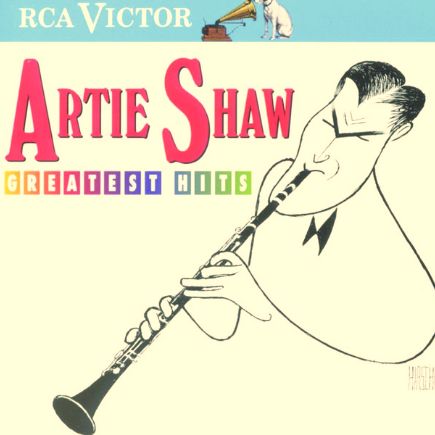Lover, Come Back to Me: des planches de Broadway aux feux du jazz
Composée en 1928 par Sigmund Romberg sur des paroles d’Oscar Hammerstein II, Lover, Come Back to Me voit le jour dans la comédie musicale de Broadway The New Moon, où elle est interprétée pour la première fois par Evelyn Herbert et Robert Halliday.
À l’origine conçue pour un contexte lyrique et dramatique, typique des grandes productions musicales du début du XXe siècle, la chanson se distingue par une intensité émotionnelle marquée et une construction mélodique riche.
C’est avec la seconde adaptation cinématographique de The New Moon, en 1940, que le morceau connaît un regain d’intérêt. Détachée de ses origines scéniques, Lover, Come Back to Me séduit alors le monde du jazz, notamment dans des versions instrumentales au tempo plus soutenu.
Le rythme binaire initial est souvent réinventé en swing vif et énergique, transformant la nostalgie romantique de la version originale en un véritable tourbillon musical. Le refrain, accrocheur et dramatique, sert d’appui idéal aux solistes, qui peuvent y déployer leur inventivité tout en conservant l’empreinte émotionnelle du thème.
L’énergie irrésistible de Artie Shaw
Enregistrée à New York le 17 janvier 1939, la version de Lover, Come Back to Me par Artie Shaw et son orchestre illustre un moment d’apogée dans la carrière du clarinettiste. Porté par une notoriété fulgurante et une maîtrise technique exceptionnelle, Shaw transforme cette chanson en un tour de force où éclat orchestral et virtuosité individuelle se conjuguent avec une évidence déconcertante.
L’arrangement se distingue dès l’ouverture : une introduction incisive, structurée comme un échange électrique entre cuivres et bois, installe un climat d’urgence parfaitement calibré. Le tempo rapide renforce cette tension joyeuse, tandis que la section rythmique — contrebasse souple, guitare précise, batterie nerveuse — soutient un swing continu, presque irrésistible. Les pupitres de cuivres enrichissent l’ensemble de réponses fulgurantes et de contrepoints ciselés.
Le solo de clarinette constitue le cœur de l’enregistrement. D’une fluidité souveraine, Shaw y déploie un jeu qui mêle agilité acrobatique, articulation d’une netteté remarquable et lyrisme soigneusement dosé. Ses variations improvisées révèlent une pensée musicale affûtée, capable d’allier prouesse technique et profondeur expressive.
Lover, Come Back to Me: de los escenarios de Broadway al fuego del jazz
Compuesta en 1928 por Sigmund Romberg, con letra de Oscar Hammerstein II, Lover, Come Back to Me nació en el musical de Broadway The New Moon, donde fue interpretada por primera vez por Evelyn Herbert y Robert Halliday.
Concebida originalmente en un contexto lírico y dramático, característico de las grandes producciones musicales de principios del siglo XX, la canción se distingue por su intensidad emocional y su riqueza melódica.
Fue con la segunda adaptación cinematográfica de The New Moon, en 1940, cuando la pieza recobró notoriedad. Alejada de sus orígenes teatrales, Lover, Come Back to Me comenzó a seducir al mundo del jazz, especialmente en versiones instrumentales de tempo más ágil.
El ritmo binario original fue a menudo transformado en un swing vibrante y enérgico, que convierte la nostalgia romántica de la versión inicial en un verdadero torbellino musical. El estribillo, cautivador y dramático, sirve de base perfecta para que los solistas desplieguen su creatividad sin perder la intensidad emocional del tema.
La energía irresistible de Artie Shaw
Grabada en New York el 17 de enero de 1939, la versión de Lover, Come Back to Me interpretada por Artie Shaw y su orquesta representa un momento culminante en la carrera del clarinetista. Impulsado por una notoriedad fulgurante y una técnica excepcional, Shaw transforma esta canción en una exhibición virtuosa donde el brillo orquestal y la destreza individual se combinan con una naturalidad sorprendente.
El arreglo destaca desde los primeros compases: una introducción incisiva, estructurada como un intercambio eléctrico entre metales y maderas, establece un clima de urgencia perfectamente controlado. El tempo rápido refuerza esta tensión vibrante, mientras la sección rítmica —contrabajo flexible, guitarra precisa y batería enérgica— sostiene un swing continuo e irresistible. Los metales aportan réplicas fulgurantes y contracantos finamente esculpidos.
El solo de clarinete constituye el núcleo del registro. Con una fluidez soberbia, Shaw despliega un lenguaje que combina agilidad acrobática, una articulación nítida y un lirismo equilibrado. Sus variaciones improvisadas revelan un pensamiento musical agudo, capaz de unir virtuosismo técnico y verdadera profundidad expresiva.
Lover, Come Back to Me: dai palcoscenici di Broadway al fuoco del jazz
Composta nel 1928 da Sigmund Romberg su testo di Oscar Hammerstein II, Lover, Come Back to Me nasce nel musical di Broadway The New Moon, dove viene eseguita per la prima volta da Evelyn Herbert e Robert Halliday.
Originariamente pensata per un contesto lirico e drammatico, tipico delle grandi produzioni musicali del primo Novecento, la canzone si distingue per l’intensità emotiva e la ricchezza della sua linea melodica.
È con la seconda trasposizione cinematografica di The New Moon, nel 1940, che il brano conosce una nuova popolarità. Affrancandosi dalle sue origini teatrali, Lover, Come Back to Me conquista l’universo jazzistico, soprattutto in versioni strumentali a tempo più sostenuto.
Il ritmo binario originale viene spesso reinventato in chiave swing, vivace ed energica, trasformando la malinconia romantica della versione iniziale in un vero vortice musicale. Il ritornello, accattivante e drammatico, rappresenta un supporto perfetto per i solisti, che possono liberare la propria inventiva senza tradire l’impronta emotiva del tema.
L’energia irresistibile di Artie Shaw
Registrata a New York il 17 gennaio 1939, la versione di Lover, Come Back to Me interpretata da Artie Shaw e dalla sua orchestra segna un momento di assoluto apice nella carriera del clarinettista. Forte di una notorietà travolgente e di una tecnica straordinaria, Shaw trasforma questo brano in un vero tour de force, dove brillantezza orchestrale e virtuosismo individuale si fondono con sorprendente naturalezza.
L’arrangiamento colpisce fin dall’inizio: un’introduzione incisiva, costruita come un dialogo elettrico tra ottoni e legni, instaura un clima di urgenza perfettamente calibrato. Il tempo rapido accentua questa tensione vivace, mentre la sezione ritmica —contrabbasso flessibile, chitarra precisa e batteria nervosa— sostiene un swing continuo e quasi irresistibile. Gli ottoni arricchiscono l’insieme con risposte fulminee e controcanti cesellati.
Il solo di clarinetto rappresenta il cuore dell’incisione. Con una fluidità sovrana, Shaw sviluppa un linguaggio che unisce agilità acrobatica, articolazione impeccabile e un lirismo misurato. Le sue variazioni improvvisate rivelano un pensiero musicale affilato, capace di coniugare tecnica virtuosistica e autentica profondità espressiva.
Lover, Come Back to Me: from the Broadway stage to the fire of jazz
Composed in 1928 by Sigmund Romberg with lyrics by Oscar Hammerstein II, Lover, Come Back to Me debuted in the Broadway musical The New Moon, where it was first performed by Evelyn Herbert and Robert Halliday.
Originally designed for a lyrical and dramatic setting, in the style of early 20th-century musical theater, the song stands out for its emotional intensity and richly crafted melody.
It was with the second film adaptation of The New Moon in 1940 that the piece regained prominence. Freed from its theatrical roots, Lover, Come Back to Me began to captivate the jazz world, especially through faster-paced instrumental versions.
The original binary rhythm has often been reimagined as lively, energetic swing, transforming the romantic nostalgia of the original into a whirlwind of musical joy. The chorus, catchy and dramatic, offers the perfect foundation for soloists to unleash their creativity while preserving the emotional essence of the theme.
The irresistible energy of Artie Shaw
Recorded in New York on January 17, 1939, the version of Lover, Come Back to Me performed by Artie Shaw and his orchestra captures a peak moment in the clarinetist’s career. Driven by soaring popularity and exceptional technical mastery, Shaw transforms the song into a tour de force where orchestral brilliance and individual virtuosity merge with striking ease.
The arrangement stands out from the opening: an incisive introduction, shaped as a charged exchange between brass and woodwinds, sets a perfectly calibrated sense of urgency. The fast tempo heightens this vibrant tension, while the rhythm section — supple bass, precise guitar, and sharp-edged drums — maintains a continuous, irresistible swing. The brass section adds flashes of brilliance and finely crafted counterlines.
The clarinet solo forms the centerpiece of the recording. With sovereign fluidity, Shaw unfolds a style that blends acrobatic agility, remarkably clear articulation, and carefully measured lyricism. His improvised variations reveal a sharply honed musical mind, capable of uniting technical prowess with genuine expressive depth.


